For visitors to the website who have never visited our garden, I thought it would be helpful to give a little background history and information about its layout and development since it forms the backdrop to nearly all my writing and photography. Check out the Garden Views pages link, for more up-to-date images.
The garden has been created gradually by us over the nearly 30 years that we have owned Gelli Uchaf. Hand in hand with restoring the derelict buildings of our C17th Welsh longhouse home came the task of creating a garden sympathetic to the landscape and location, bearing in mind that we are 800 feet above sea level, receive on average around 70 inches (1780 mm) rainfall per annum and over this time have had air temperatures from minus 18 degrees C in winter, to 36 degrees C in summer (2022).  In 2015 we topped our rainfall total with 2105 mm annually and 534 mm in December alone, significantly eclipsing even the monthly record maximum of 417 mm from December 2013. Fortunately 2016 saw a more benign 1600 mm.
In 2015 we topped our rainfall total with 2105 mm annually and 534 mm in December alone, significantly eclipsing even the monthly record maximum of 417 mm from December 2013. Fortunately 2016 saw a more benign 1600 mm. 2018 brought not only freeze drying and minus 14 degrees C in March/early April, but then a prolonged drought during the summer – perhaps the worst around here since the 1940’s.
2018 brought not only freeze drying and minus 14 degrees C in March/early April, but then a prolonged drought during the summer – perhaps the worst around here since the 1940’s.
It’s a changing and challenging climate in which to garden! 
(Line Drawing of Gelli Uchaf Garden, 2019).Thanks to Fiona, for all this hard work).
(Gelli Uchaf – as first seen in July 1993)
The garden has evolved over this long period without any grand plan, but as a result of seeing what works and what doesn’t, up here. It’s become a very special challenge for us and at last, after all these years, has taken shape and many parts of it are beginning to fulfil their potential as we continue to adapt to successes and failures.
 Our “Garden Impressionists” name comes from the inspiration we received from a visit to Monet’s garden at Giverny many years ago. This led to a significant change in how we’ve subsequently developed and planted up the garden.
Our “Garden Impressionists” name comes from the inspiration we received from a visit to Monet’s garden at Giverny many years ago. This led to a significant change in how we’ve subsequently developed and planted up the garden.
 We were amazed by the vibrant intermingling colour schemes in the formal part of Giverny’s design, and how this area was humming with insects on the warm, sunny, early May day that we visited. Using insect friendly flowers, incorporating native flowers and multi-cultural, multi-layered plantings with perennials, bulbs and shrubs in order to maximise flower numbers throughout the year, has become the predominant theme for much of our garden.
We were amazed by the vibrant intermingling colour schemes in the formal part of Giverny’s design, and how this area was humming with insects on the warm, sunny, early May day that we visited. Using insect friendly flowers, incorporating native flowers and multi-cultural, multi-layered plantings with perennials, bulbs and shrubs in order to maximise flower numbers throughout the year, has become the predominant theme for much of our garden.
However, Giverny clearly has a completely different climate and soil and is mainly planned for visitors from April to October. It’s also managed by several gardeners, with the use of much annually planted material. We wanted flowers to lift our spirits throughout the year, yet have limited labour and financial resources, so needed to use mainly perennial plants and ones which either self-sowed or were easy to home propagate. Increasingly our focus has been to create planting mixes that though constantly morphing, develop into naturalistic ecosystems, gradually reducing the need for human intervention in time and effort – although we’re still learning how to best achieve this in some areas. Understanding the key role that insects have in our garden environment has become very important to us. (Click here for more on our favourite insect friendly flowers, throughout the year). I’ve also enjoyed a long, personal journey of discovery linked to honey bees and how to co-exist with them in a minimal intervention way, which by 2022 has led to around 5 colonies of local origin making their homes in the garden. Click here for more about this.
Understanding the key role that insects have in our garden environment has become very important to us. (Click here for more on our favourite insect friendly flowers, throughout the year). I’ve also enjoyed a long, personal journey of discovery linked to honey bees and how to co-exist with them in a minimal intervention way, which by 2022 has led to around 5 colonies of local origin making their homes in the garden. Click here for more about this. Simultaneously, we’ve tried to maintain a less formal feel in most of the garden, appropriate to its rural setting. As we age, the fact that several areas of the garden are moving towards having a woodland feel is a relief, as the very necessary selective hand weeding reduces in these parts.
Simultaneously, we’ve tried to maintain a less formal feel in most of the garden, appropriate to its rural setting. As we age, the fact that several areas of the garden are moving towards having a woodland feel is a relief, as the very necessary selective hand weeding reduces in these parts.
 The house, barns and roughly 1.5 acres of garden are at the centre of an upland smallholding in North Carmarthenshire (Wales, UK). With a stream, Afon Melinddw, and two natural ponds below, and a hill rising beyond the property eventually to Mynydd Llanllwni, it presents a varied canvas of micro-climates and conditions. About 6 acres of the land are being managed to encourage wild flower and greater species diversity. Much of the land is steeply sloping to the East and South and although this gives huge advantages in terms of views as far as the Brecon Beacons (on a clear day), it does mean that sections of the garden have quite steep paths.
The house, barns and roughly 1.5 acres of garden are at the centre of an upland smallholding in North Carmarthenshire (Wales, UK). With a stream, Afon Melinddw, and two natural ponds below, and a hill rising beyond the property eventually to Mynydd Llanllwni, it presents a varied canvas of micro-climates and conditions. About 6 acres of the land are being managed to encourage wild flower and greater species diversity. Much of the land is steeply sloping to the East and South and although this gives huge advantages in terms of views as far as the Brecon Beacons (on a clear day), it does mean that sections of the garden have quite steep paths.
 For some short video clips with natural sound from the garden, please click below, for a sample mid-April video from our YouTube channel.
For some short video clips with natural sound from the garden, please click below, for a sample mid-April video from our YouTube channel.
We were fortunate to inherit many mature trees within the site – hence the appropriate and descriptive property name of Gelli Uchaf or ‘the upper little grove’. We have been able to use most of these in creating the several distinct areas of garden in the immediate surroundings of the house. The topsoil is naturally very shallow and lies over shale in all of the garden, although the lower fields have bands of soil, clay and peat. Our natural spring water is consistently below a pH of 5 (i.e. quite acid).
The garden has developed into the following areas, each with a very different feel, planting scheme and micro-climate, mainly because of the sloping nature of the landscape. For our most comprehensive review of the garden to date, the roughly 45 minute YouTube presentation from June 2021 on Garden Masterclass covers the garden’s development over the years.
Otherwise, you can read on, below, for a little about the garden’s main features:
- A long border outside the front of the cottage. The first area of garden we created, as the front wall was re-built, and cobbled path laid. Over many years, more bulbs and a range of perennials have been added in this, as well as along the front of the cottage, give a long season of interest.







- A free draining multicultural meadow terrace garden with naturalistic and increasingly diverse planting with spring bulbs, and seating, shown below through the seasons:.
- A sheltered shrubbery including many late season nectar rich plants such as sedum, marjoram and buddleja, as well as paeony, clematis, roses, fuchsia and spring bulbs.
- A shady ‘amphitheatre’ bed with hellebores, hydrangea, pulmonaria and spring bulbs:


- A ‘crazy’, mossy croquet lawn, surrounded by shrub/perennial beds, again with many hydrangea plants, herbaceous perennials and spring bulbs.

- A woodland copse garden with camellia, skimmia, pieris, rhododendron, azalea, acer, hydrangea, and thousands of spring bulbs and cyclamen.



- A more formal terrace, with tubs and seating:
- An experimental, re-tyred matrix fruit and flower garden with many different apple cultivars, lots being grown with a unique spiral method of training. This area is also gradually developing as a display feature for some of our more unusual snowdrop cultivars, of which we now have around 250 different forms:
 This part of the garden won second prize in the inaugural “Greener Gardening Ideas” competition sponsored by the National Trust, Yorkshire Bank, and Daily Telegraph in 2009.
This part of the garden won second prize in the inaugural “Greener Gardening Ideas” competition sponsored by the National Trust, Yorkshire Bank, and Daily Telegraph in 2009.

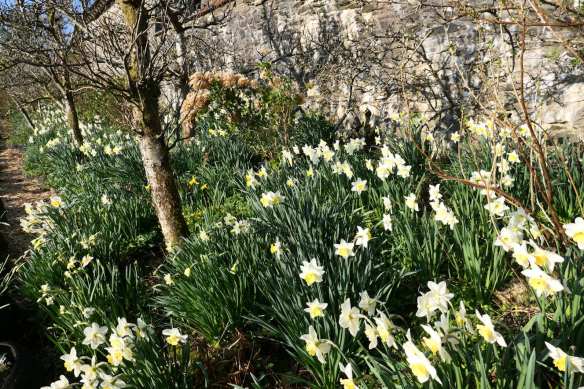

- A lower meadow copse with masses of snowdrops, daffodils, crocus, primula, hydrangeas and other shrub and tree plantings for autumn colour and foliage interest. This area also contains many of the increasing collection of snowdrops from my Welsh historic snowdrop project, which gets added to every year. (Click here for more).
- From the very beginning we have always had a vegetable growing area in the garden. Initially just beneath black plastic sheeting on the site of the current upper apple trees, then in the re-tyred matrix garden with its dramatically increased top soil depth and improved early season soil warming. Finally, when the PV site was levelled, a huge pile of mixed top soil and subsoil created an opportunity to relocate vegetables to a more open sunny site. The spoil soil was gradually shovelled into re used builder’s big bags, with wood chip paths between.

 For about 7 years these were the location for vegetable growing, and also more recently as trial beds for different daffodil cultivars followed by cut flowers.
For about 7 years these were the location for vegetable growing, and also more recently as trial beds for different daffodil cultivars followed by cut flowers.  Use has been made of water filled bottles and enviromesh as an aid to warmth and extending the growing season on this exposed high altitude site.
Use has been made of water filled bottles and enviromesh as an aid to warmth and extending the growing season on this exposed high altitude site. 
 In late 2018, as more on-site wood chip became available, and because the big bags sagged over the years, the beds have been tidied up and made more productive with 8 inch edging boards to edge them, as well as removing most of the side and end sections of the big bags.
In late 2018, as more on-site wood chip became available, and because the big bags sagged over the years, the beds have been tidied up and made more productive with 8 inch edging boards to edge them, as well as removing most of the side and end sections of the big bags.
- The two banks behind the cottage, created by digging out the shale in the very earliest stages of the house renovation to free the back wall from the damp clutches of the mountain. They’re gradually being made more interesting, limited by the challenging slope and lack of soil. A work in progress, using tough perennials like heathers, geraniums, cotoneaster and other plants to stabilise the loose shale. Even some tough snowdrops are now gradually establishing here.
- A new copse area with many Sorbus and Malus trees grown from seed, and underplanted with some of our range of daffodil cultivars. The most recent, and latest area of the garden which is quickly developing its own interest at certain times of the year.








- About 9 acres of meadows with stream, natural ponds and meadow walks. Some 6 acres of these are being managed for greater wildflower and other species diversity. In 2018 we designed and built a unique shepherd’s hut to allow us, and visitors, to enjoy the views over the meadows and landscape whatever the weather. Click here for more about The Hut.
 Beginning to restore the meadows (some from shoulder high mono-culture soft rush), into wonderfully diverse habitats has been one of our major focuses in 2012-2018. I also set up and managed for several years a website for the fledgling Carmarthenshire Meadows Group, which may be of interest to readers, and encouraging more flowers into our own meadows is an ongoing project here. Click here for more.
Beginning to restore the meadows (some from shoulder high mono-culture soft rush), into wonderfully diverse habitats has been one of our major focuses in 2012-2018. I also set up and managed for several years a website for the fledgling Carmarthenshire Meadows Group, which may be of interest to readers, and encouraging more flowers into our own meadows is an ongoing project here. Click here for more.






As you might work out from the photos above, we have a generally naturalistic planting style in most of the garden, and are especially keen to grow plants which support a diverse wildlife ecosystem in the garden. Our gardening tends to be predominantly organic with no pesticide or fungicide use in the garden. Since we try to be as self sufficient in fruit and vegetables as possible, we do resort to some slug control, ferric phosphate based, and in the past occasionally judiciously use systemic herbicides when starting work on new areas of the garden. From 2015, in view of our high annual rainfall, we have made occasional use of dried seaweed as a source of trace minerals, which are likely to be easily leached out of our sloping land. My impression is that flower and foliage colours have improved as a consequence.
We have a number of varieties of several plant groups including hydrangea, ilex (holly), clematis, snowdrops, around 200 different daffodils (particularly vintage cultivars) and many climbing and rambling roses. Click here for more on our favourite garden palette plants throughout the year. Historically we haven’t employed any external help within the garden, although we do use tree surgeons for major tree work, but for the first time from late 2017 we’ve been delighted to welcome William as a helper around the garden and fields, for one day a week.
For more views of what the garden looks like through the year, click here and then on the separate Garden Views drop down pages.
In November 2017 we were thrilled to find that the garden was one of just 3 in Wales, and 13 in the UK to feature in Claire Takacs stunning book of 70 gardens from around the globe, titled “Dreamscapes”. Melbourne based Claire was the very first winner of The International Garden Photographer of The Year competition, curated by Kew Gardens, in 2008. Click here for more.
This was supplemented by the garden also featuring as one of just 14 in the UK, and 41 in total from around the world, in the detailed and beautiful 2022 book written by Noel Kingsbury with more of Claire’s stunning photos, “Wild: the Naturalistic Garden”. A huge honour for our Welsh hillside plot to sit alongside some of those designed by famous international designers.
Below are a few of the comments made by visitors to the garden, and our website, since we have opened it to the public under the National Gardens Scheme in 2010 (please click here for the separate page with visiting information).
‘One of the Best Snowdrop Events to Visit in 2018’ Daily Telegraph. Click here.
‘An oasis of calm and beauty’ NW Brechfa
‘What a beautiful place, so lovely and such magic here’ VW Pontyberem
‘Wondrous garden. Thanks for your hospitality’ Carol Klein & Gardener’s World Team Feb 2016
‘Hard work – beautiful results!’ JB Oregon USA
‘Fabulous garden and wonderful welcome! – delightful touches to the garden – paths, steps, and furniture – Many thanks.’ S4C Wedi 3 Film Crew
‘Thank you for sharing your vast knowledge – beautiful garden.’ KW Mynydd March 2016
‘Fascinating hillside garden, beautifully done’ GC Cilgerran
‘Lovely spending time in your absolutely beautiful garden’. Claire Takacs, IGPOTY winning photographer, Melbourne May 2016
‘Forget the perfect trophy garden. Today’s finest landscapes are positively wild…Some of the gardens are lower-key but no less naturalistic or reflective of gentle artistry. In the Welsh hills of Carmarthenshire, Julian and Fiona Wormald have spent 24 years creating a densely planted, multi-layered garden of bulbs, perennials and shrubs around their 17th-century Welsh longhouse.’ Adrian Higgins. Washington Post. March 2018 Click here.
‘As soon as you step out onto the terrace in front of the house – a riotous tapestry of low growing ground-cover plants – it becomes immediately apparent that this is no ordinary garden. Delve a little deeper and you find that this is a garden that brings together real technical innovation and creativity in a way that is all too rare’. Noel Kingsbury Gardens Illustrated magazine June 2017.
‘Beautiful and inspirational – a hidden gem of a garden’ A & M Cilycwm
‘Magic around every corner’ SC Milford Haven
‘They have use colour densely and vibrantly as an impressionist painter might. Drifts of small flowers mimic painting techniques such as pointillism – painting with small dots of colour; foliage patterns resemble short, distinct brush strokes while the changing light, shadow and the moving season is a constant feature, making the garden as fresh and original as the ground-breaking French impressionists themselves.’ Naomi Slade – Amateur Gardening Magazine
‘Inspiring. Truly wonderful. Such toil and commitment’. D,P&P Abergorlech
‘Truly wonderful. Gardens within a garden and amazing plants and natural effects’. M.T. Salem W.I. Group visit. 
‘A truly magical garden.Thanks for your hospitality’. G.J.&.P. Llandrindod Wells.
‘Truly inspiring and informative morning. So much to see and learn.Lovely country garden and meadows’ C&C Esgairdawe
‘Fantastic meadows and garden. Learnt a lot from visiting.’ BC Gloucestershire.
‘Amazing!’ JF. S.Africa
‘Fantastic Achievement. We will be back!’ J.W.A. Cellan 
‘Beautifully inspiring garden and lovely artwork’. A.W. Llandybie
‘Looking forward to a return visit later in the year.’ J. Kidwelly
‘Stunning Garden and impressive work’ S.K. Hampshire
‘Extremely interesting – a lot of work, effort and ingenuity well rewarded.’ R.E. Ystradynglais
‘ Would like to see the garden in every season’. E.R.D. Llanfair Clydogau 
‘Thank You. What an amazing garden. Inspiring.’ K&P London
‘Magical’ BW Llangadog
‘Beautiful day, wonderful setting, inspirational garden and photography’. P&C Talsarn
‘Inspirational! A tribute to years of hard physical effort plus sensitive thoughtful design.’ H&S Cardigan 
The garden and a scaled down version of the blog was one of 3 finalists in The English Garden’s quest to find Britain’s Best “Green and Gorgeous Garden” awarded at the 2013 Hay Literary and Arts Festival. Click here for details. And rated as one of 10 secret gardens of Wales to visit by the Western Mail, and Wales On-Line in April 2014. Click here for more. It also featured in the opening spring programme of BBC 2’s Gardener’s World for 2016. Click here. And the June 2017 edition of Gardens Illustrated magazine.
Some of the images Julian has taken over the years in the garden have formed the basis for a unique range of silk scarves which we design and Fiona makes here. Click here for the separate webpage which features the scarves.
We have a few plants available for visitors to purchase at reasonable prices, based on our Gelli Uchaf Planting Palette, as above. However as we get older, and after the water supply issues caused by the droughts of 2018 and 2022, we often have few plants for sale, other than at snowdrop time. We only grow plants which we enjoy and which thrive here, and much in the garden has indeed been propagated by us, including many trees grown from seeds and perennials from cuttings and divisions. We have a small unheated greenhouse, but all of our plants have to survive in our climate without any real cosseting, and are grown in our own soil/leaf-mould based compost to avoid buying in much in the way of planting materials.
The award winning documentary film, ‘Epiphany In Translation’, made by Julian throughout 2010 was filmed at Gelli Uchaf. (See separate website page by clicking here for details). Julian also made a film in 2017 “Soft Rush- A growing Problem” about our battle to restore species diversity to our lower wet meadows. Click here.
In addition over 90% of the moths and butterflies pictured in our DVD ROM guide to garden moths and butterflies, ‘In a Different Light’, have been found at or within 500 metres of our home, and most have been photographed here. All the plant images in the DVD-ROM and our greetings card images were taken here. (See the separate website page of all the moth species images by clicking here for details).
Last updated 15/01/2023










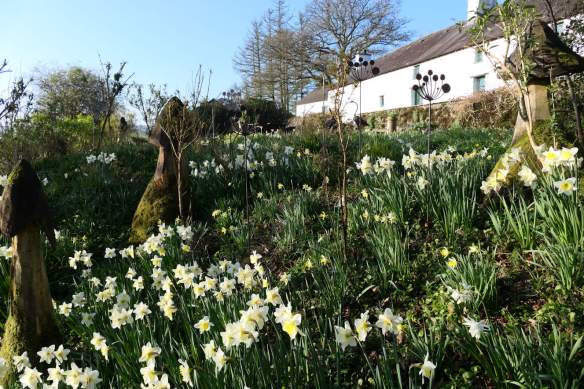


































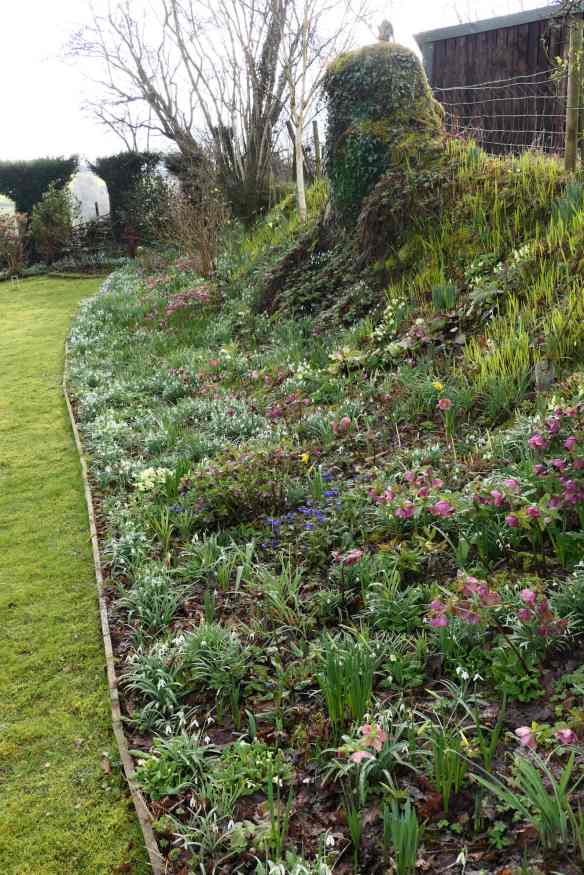
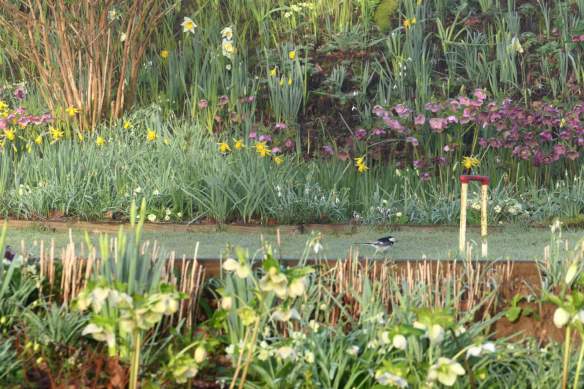





































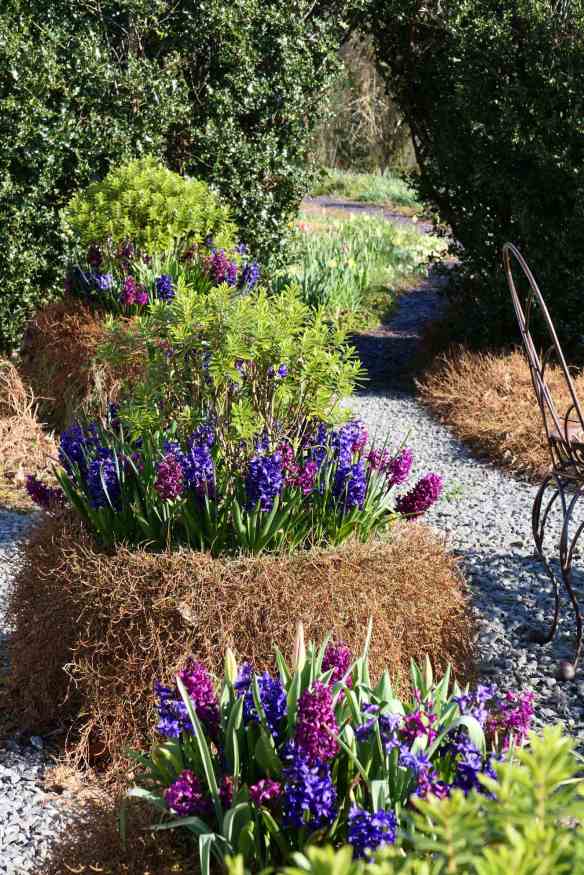

















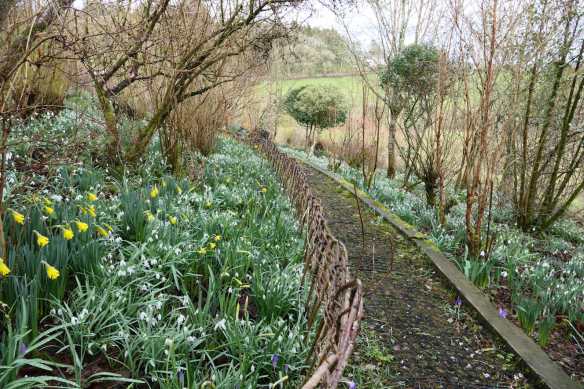


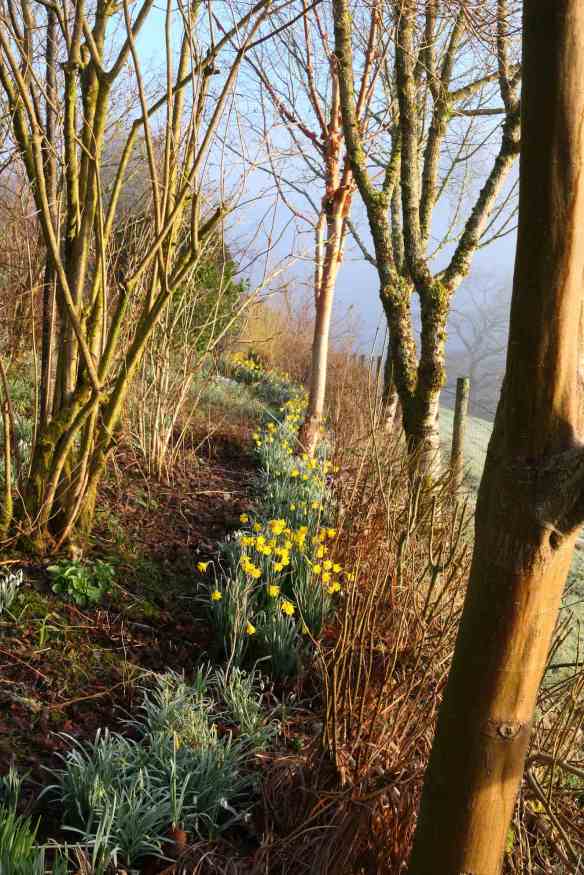





























AWESOME!!!
Hello BR, and thanks for the comment from a rain soaked Welsh hillside, this morning,
BW,
Julian
Just one word: Great!!!!!!
Hello PS,
Thanks for looking, and glad that you enjoyed it!
Vielen Dank,
Best wishes
Julian
Your views are stunning, I had no idea of beautiful your garden was until reading this page. So much to take in, what an absolute joy living here must be.
Thanks Julie. We love living in what we consider to be a ‘Lle arbennig’ – a special place. Much of the time it is indeed a joy to live here. Days like today ( 8/02/2015) with clear blue skies after a hard frost, and stunning sunrise, the first honeybees of the year foraging on the Crocus flowers, and the scent from Daphne bholua pervading the air, remind us of this real joy. There are times when we remember such blissful days!
Best wishes
Julian
It looks like a garden of paradise. You are amazing!
Hello Inese,
That’s a very kind comment, and we do enjoy, and enjoy sharing with others either physically or through the blog, the garden. But the ‘amazing’ description belongs more to the plants, the insects, the animals, the fungi beneath the soil, which allows this sort of harmony (though harmony is too idealistic and romantic a word) to flourish. The longer I observe and think about all of these natural intricacies, the more amazing they all seem to be! As I know you’ll agree.
Best wishes
Julian
Harmony is the word. Best wishes!
Inese
It is a truly beautiful place. Grew up at the farm. It was quite magical even then.
Hello Iona,
Thanks for the comment. I wonder when you lived at Gelli? Over the years, we’ve gradually found out more about its past history, and interesting snippets – like the old field names, have only come to light recently. If you still live locally and would like to visit your old home sometime, do let us know.
But it truly is a magical place – many visitors say that they sense something special about it – and we feel very privileged and fortunate to have been able to be a part of its long history,
Best wishes
Julian
So inspired by your garden on a cold, wet January morning. Thanks so much.
Hello Cathy,
Thanks for the kind comment. Sorry not to reply sooner, but have only just been allowed to return on line after 8 weeks off …what a trauma! And at last the weather forecast here is predicting a day or two without rain!
Best wishes
Julian
Glad you have a brighter prospect now. So enjoyed your blog and looking forward to more posts, although I see what you are up against! Happy 2016!
Thanks Cathy. We’ve even seen some sun today, so things are definitely looking up a bit!
Best wishes
Julian
Dear Julian. We are friends of Victoria & Nick Croftham-Wadham. Vic suggested I come to see what you have achieved in your garden. Having spotted Gelli Uchaf in the NGS leaflet I would love to come and visit but I see you only accept groups of 6 or more. Would you consider a smaller group at any time? It may only be myself and a friend I’m afraid. I have quite a challenge on my hands… We live on Llanllwni Mountain (approx 1000 ft) and have a bare, sloping “garden” (patch of grass at the moment!) which is pretty much stone underneath (it used to be a farm courtyard). The view is spectacular and I would love the garden to blend into it. My problem is that I have very little gardening experience and am somewhat daunted by the project in front of me! I am really hoping for some advice as to which plants and flowers will survive in this elevated, exposed position/climate. I hope you can help – I’m completely in awe at your beautiful plot and what you have achieved. Kind regards, Nikki Channon, Blaen Nant Gwyn, Llanllwni Mountain SA39 9EH (www.brechfaforestbarns.com and http://www.mudtrek.com).
Hello Nikki,
Thanks for the email. Maybe we could arrange for you to come on a Friday or Saturday, when we have another group coming, but at a different time? I’ll get in touch with you shortly through one of your websites to follow this up. Anyway thanks for the interest – maybe this is why you emailed now (?) but by chance the Garden is featured tonight on BBC2 Wales, Gardener’s World, only a small piece, but it captured the moos of this area nicely – and indeed the garden!
Best wishes
Julian
I am almost wordless at the beauty and naturalistic look of your garden.
Thanks very much Brian, I’m glad you like it – a lot of work to get it like this, but increasingly we get a lot of pleasure from it,
best wishes
Julian
Having just found your blog I must come and look for myself. You can’t be far away. Stunning.
Thanks for the comment, MCL.
I have indeed just found your lovely blog and sketches as well, and found a resonance with why you feel it’s worth writing about rural matters in a world largely focused around urban environments, and increasingly divorced from the natural world. I figure if we can keep writing, painting and photographing, we probably won’t change anything, but perhaps when the world collapses in some form of natural or man-made disaster, at least we can say “Well we did try to raise awareness”!
Best wishes
Julain
Beautiful blog and photos. I am a travel blogger from India. I like to explore lesser known places. Please have a look at my page to read about the undiscovered ones.
Thanks JB, and glad you enjoyed your virtual visit to Wales. I send you warmest greetings from here to India, and wish you good health and calm during these tricky times,
best wishes
Julian
Thank you. Wish you good health too. Please stay at home and be safe,
A most beautiful garden, very inspiring!